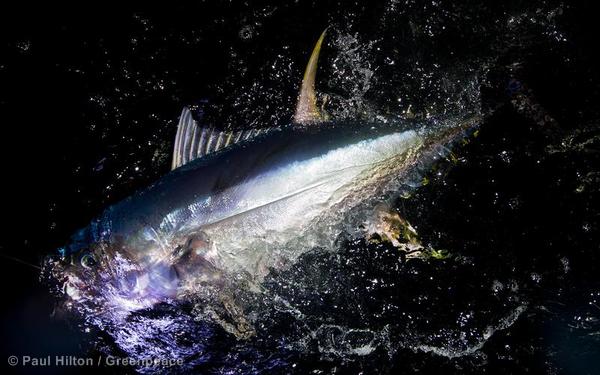
Once upon a time in the Bay of Plenty in New Zealand there was a great tradition. Hopeful anglers would gather to face off in the annual Whakatane Tuna Tournament. I say ‘once upon a time’ because the Whakatane Tuna Tournament no longer exists.
Last year, not a single tuna was caught. The President of the New Zealand sports fishing council lamented that:
“The heart has been ripped out of the yellowfin tuna fishery in New Zealand, with only a handful of fish caught in the Bay of Plenty in recent years. And it is getting worse not better”.
A tuna-less tuna tournament is a depressing affair.
Greenpeace and recreational fishers are often seen as odd bedfellows, but we have a lot in common. We are both concerned with the way the industrial fishing sector has grown and the evidence that fish stocks have suffered.
Greenpeace is a maritime campaigning organisation; our ships spend time at sea bearing witness to the changes on the water and the damage wrought by irresponsible fishing. The fishermen we meet tell us how things aren’t the same. Recreational fishers see much the same out on the water. They also share stories.
The story of the Whakatane tuna tournament is as distressing as fishermen’s tales come. But it’s a story destined to be repeated if we don’t change the way we fish. In fact we may be closer to repeating it than we think.
Queensland tuna and billfish fishers fishing in the Coral Sea have been noticing a decline in the big yellowfin and bigeye tuna, and prized billfish like marlin. Many of these giants of the sea spawn in the Pacific and wind their paths around the Islands into Australian waters.
Industrial fishing is the likely cause of the disappearance of these fish and the big, expanding distant water fishing fleets of Asia, the EU and the US fishing the Pacific is a major contributor.
Pacific longliners have an appalling record of bycatch of sharks, marlin, turtles and other creatures every time they go out. But it’s the burgeoning purse seine tuna fishing fleet and its increasing use of destructive fish aggregation devices (FADs) that is the real culprit.
Last year, over 3 million tonnes of tuna were caught in the Pacific. The majority of skipjack tuna caught in the Pacific – that is, the tuna that ends up in cans on Australian super market shelves – is fished using these ‘FADs’.
So what is a FAD? FADs are floating objects that tuna vessels cast adrift in the open ocean. FADs work because fish in the open ocean find random flotsam absolutely captivating. Small fish use it as a hiding place and larger animals flock to it as a source of shade and a fertile hunting ground. After a few weeks at sea, a FAD can develop an entire ecosystem around it — which is wiped out entirely when the tuna boat returns and scoops the whole thing up in a seine net.
At least 10% of every tuna haul caught on a FAD is bycatch including sharks, juvenile bigeye and yellowfin tuna, marlin, rays, warehou and mahi mahi.
That’s not good for the ocean and it’s not good Aussie fishermen.
So next time you go into the canned tuna section of the supermarket, check the Greenpeace Canned Tuna Guide before you buy to make sure your tuna wasn’t caught using a FAD.
We don’t want holiday fishing to become a ‘once upon a time’ story.

